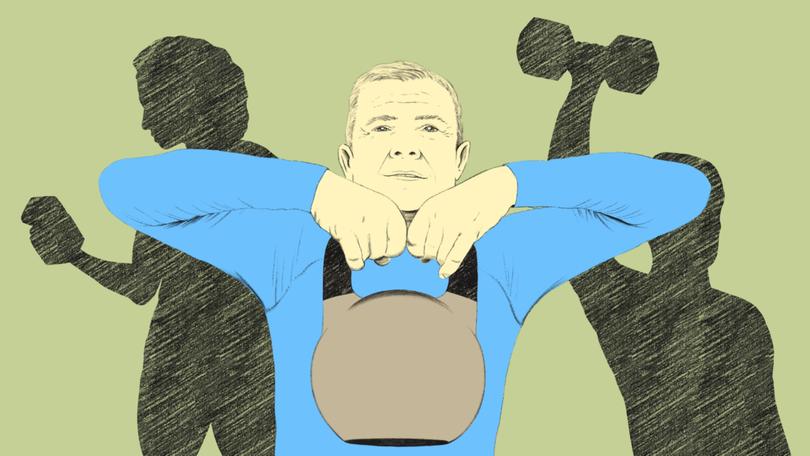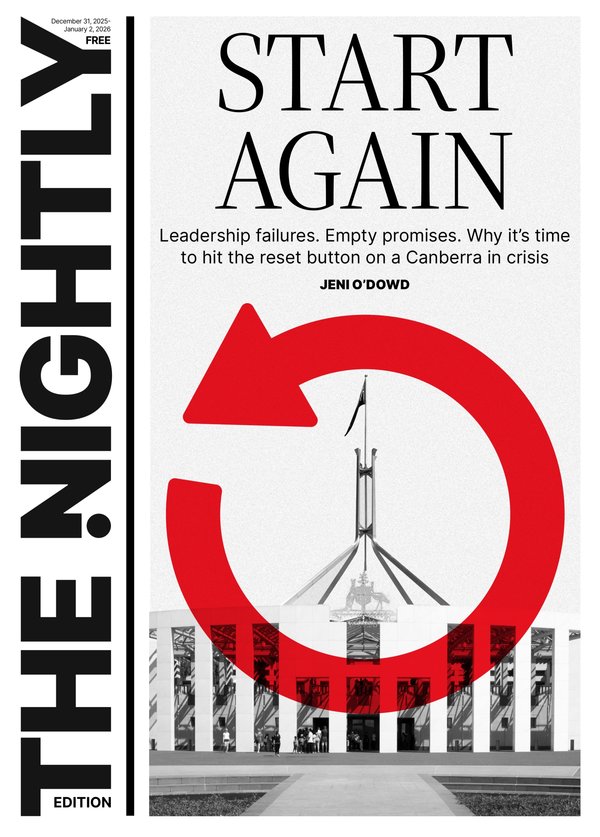The Washington Post: At 93, he's as fit as a 40-year-old. His body offers lessons on aging.

For lessons on how to age well, we could do worse than turn to Richard Morgan.
At 93, the Irishman is a four-time world champion in indoor rowing, with the aerobic engine of a healthy 30 or 40-year-old and the body-fat percentage of a whippet. He’s also the subject of a new case study, published last month in the Journal of Applied Physiology, that looked at his training, diet, and physiology.
Its results suggest that, in many ways, he’s an exemplar of fit, healthy aging - a nonagenarian with the heart, muscles, and lungs of someone less than half his age. But in other ways, he’s ordinary: a one-time baker and battery maker with creaky knees who didn’t take up regular exercise until he was in his 70s and who still trains mostly in his backyard shed.
Sign up to The Nightly's newsletters.
Get the first look at the digital newspaper, curated daily stories and breaking headlines delivered to your inbox.
By continuing you agree to our Terms and Privacy Policy.Even though his fitness routine began later in life, he has now rowed the equivalent of almost 10 times around the globe and has won four world championships. So what, the researchers wondered, did his late-life exercise do for his aging body?
Lessons on aging from active older people
“We need to look at very active older people if we want to understand aging,” said Bas Van Hooren, a doctoral researcher at Maastricht University in the Netherlands and one of the study’s authors.
Many questions remain unanswered about the biology of aging, and whether the physical slowing and declines in muscle mass that typically occur as we grow older are normal and inevitable or perhaps due, at least in part, to a lack of exercise.
If some people stay strong and fit deep into their golden years, the implication is that many of the rest of us might be able to as well, he said.
Helpfully, his colleague Lorcan Daly, an assistant lecturer in exercise science at the Technological University of the Shannon in Ireland, was quite familiar with an example of successful aging. His grandfather is Morgan, the 2022 indoor-rowing world champion in the lightweight, 90-to-94 age group.
What made Morgan especially interesting to the researchers was that he hadn’t begun sports or exercise training until he was 73. Retired and somewhat at loose ends then, he’d attended a rowing practice with one of his other grandsons, a competitive collegiate rower. The coach invited him to use one of the machines.
“He never looked back,” Daly said.

Highest heart rate on record
They invited Morgan, who was 92 at the time, to the physiology lab at the University of Limerick in Ireland to learn more, measuring his height, weight and body composition and gathering details about his diet. They also checked his metabolism and heart and lung function.
They then asked him to get on a rowing machine and race a simulated 2,000-meter time trial while they monitored his heart, lungs and muscles.
“It was one of the most inspiring days I’ve ever spent in the lab,” said Philip Jakeman, a professor of healthy aging, physical performance and nutrition at the University of Limerick and the study’s senior author.
Morgan proved to be a nonagenarian powerhouse, his sinewy 165 pounds composed of about 80 percent muscle and barely 15 percent fat, a body composition that would be considered healthy for a man decades younger.
During the time trial, his heart rate peaked at 153 beats per minute, well above the expected maximum heart rate for his age and among the highest peaks ever recorded for someone in their 90s, the researchers believe, signaling a very strong heart.
His heart rate also headed toward this peak very quickly, meaning his heart was able to rapidly supply his working muscles with oxygen and fuel. These “oxygen uptake kinetics,” a key indicator of cardiovascular health, proved comparable to those of a typical, healthy 30- or 40-year-old, Daly said.
Exercising 40 minutes a day
Perhaps most impressive, he developed this fitness with a simple, relatively abbreviated exercise routine, the researchers noted.
Consistency: Every week, he rows about 30 kilometers (about 18.5 miles), averaging around 40 minutes a day.
A mix of easy, moderate and intense training: About 70 percent of these workouts are easy, with Morgan hardly laboring. Another 20 percent are at a difficult but tolerable pace, and the final 10 at an all-out, barely sustainable intensity.
Weight training: Two or three times a week, he also weight-trains, using adjustable dumbbells to complete about three sets of lunges and curls, repeating each move until his muscles are too tired to continue.
A high-protein diet: He eats plenty of protein, his daily consumption regularly exceeding the usual dietary recommendation of about 60 grams of protein for someone of his weight.
How exercise changes how we age
“This is an interesting case study that sheds light on our understanding of exercise adaptation across the life span,” said Scott Trappe, director of the Human Performance Laboratory at Ball State University in Indiana. He has studied many older athletes but was not involved in the new study.
“We are still learning about starting a late-life exercise program,” he added, “but the evidence is pretty clear that the human body maintains the ability to adapt to exercise at any age.”
In fact, Morgan’s fitness and physical power at 93 suggest that “we don’t have to lose” large amounts of muscle and aerobic capacity as we grow older, Jakeman said. Exercise could help us build and maintain a strong, capable body, whatever our age, he said.
Of course, Morgan probably had some genetic advantages, the scientists point out. Rowing prowess seems to run in the family.
And his race performances in recent years have been slower than they were 15, 10 or even five years ago. Exercise won’t erase the effects of aging. But it may slow our bodies’ losses, Morgan’s example seems to tell us. It may flatten the decline.
It also offers other, less-corporeal rewards. “There is a certain pleasure in achieving a world championship,” Morgan told me through his grandson, with almost comic self-effacement.
“I started from nowhere,” he said, “and I suddenly realized there was a lot of pleasure in doing this.”
© 2024, The Washington Post
